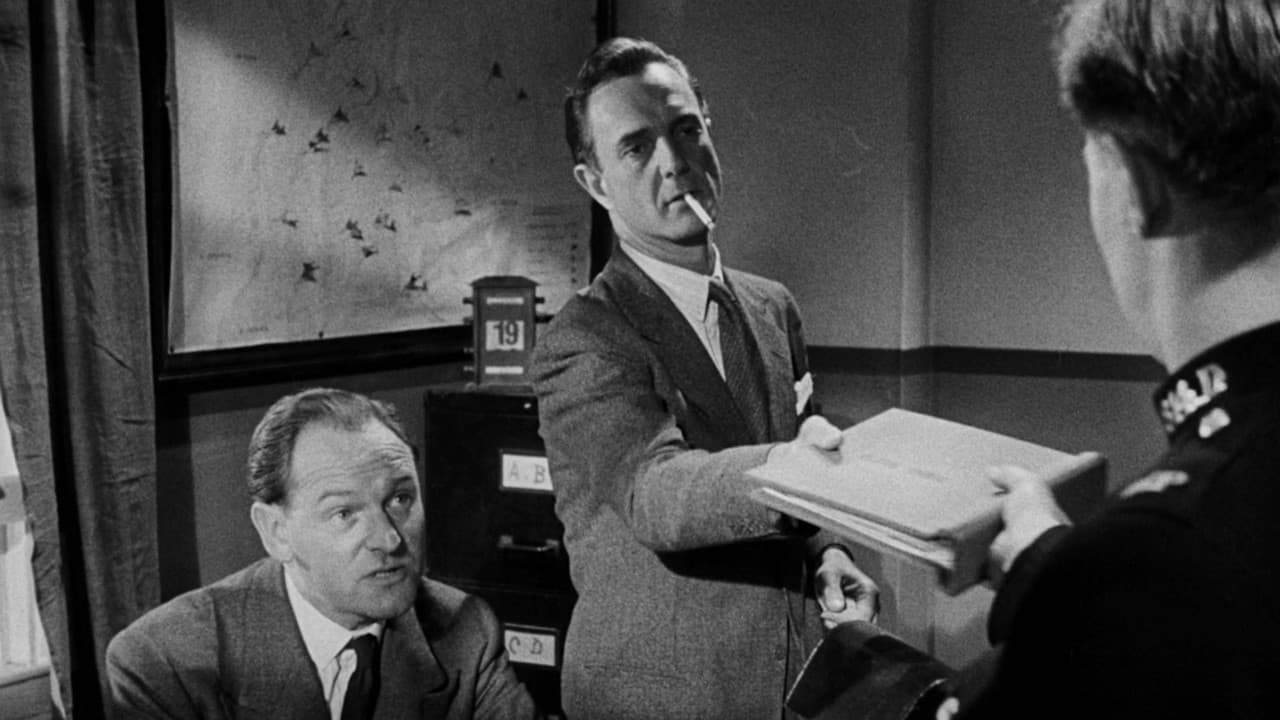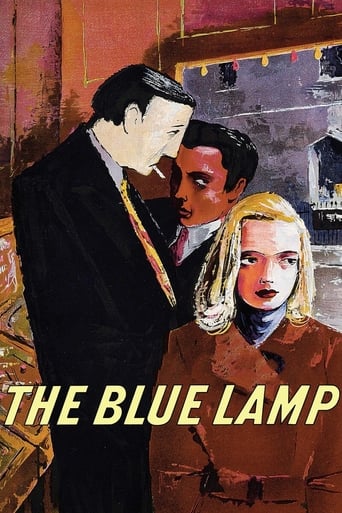Marketic
It's no definitive masterpiece but it's damn close.
CommentsXp
Best movie ever!
TeenzTen
An action-packed slog
Ginger
Very good movie overall, highly recommended. Most of the negative reviews don't have any merit and are all pollitically based. Give this movie a chance at least, and it might give you a different perspective.
James Hitchcock
During my teenage years in the seventies I was frequently being told by my elders and betters that they didn't know what the younger generation was coming to and that the young people of that era were a bunch of unruly, disrespectful, irresponsible long-haired hooligans. On the evidence of this film, however, it would appear that public concern about juvenile delinquency did not begin in 1970, or even 1960, and that my grandparents' generation regarded their own offspring, the teenagers of the forties and fifties, as a bunch of unruly, disrespectful, irresponsible hooligans. (But not long-haired. Among my father's generation long hair was seen as a sign of effeminacy rather than of hooliganism or rebelliousness)."The Blue Lamp" was made by Ealing Studios, but it is very different from the comedies which formed their best-known fare at the time. It is a police drama, made in a semi-documentary style complete with voice-over from an invisible narrator. (The title refers to the blue lamps which traditionally hung outside British police stations). It is set in and around the real-life Metropolitan Police station at Paddington Green in West London and follows the activities of a group of (fictitious) police officers, especially the experienced veteran PC George Dixon and the young rookie PC Andy Mitchell. At first their work seems routine enough; their main concern is investigating the disappearance from home of a teenaged girl named Diana Lewis. They discover that Diana is living with her boyfriend Tom Riley, a young hoodlum, but as she is seventeen and has broken no laws, they are unable to compel her to return to live with her parents.In the second half the film becomes less of a documentary and more of a social realist thriller. Tom and another young criminal rob a local cinema. Dixon, called to the scene, confronts Tom and is gunned down. The film then turns into a tense chase thriller, in which the remaining officers from the station try to hunt down Tom and his accomplice, a hunt which becomes all the more urgent when news reaches them that Dixon has died in hospital. (This development comes as a shock to the audience; the scriptwriter T. E. B. Clarke, himself an ex-policeman, was leading them to believe that the injured man was making good progress).Although Dixon dies in this film, he was to have a happy afterlife. Five years after the film was made in 1950, he was resurrected as the title character in the TV series "Dixon of Dock Green", played by the same actor, Jack Warner. (The series was not set in Paddington Green but in the fictitious London district of Dock Green, supposedly in the East End). This was to become one of the longest running and most popular programmes on British television, and ran until 1976, by which time Warner was 80 years old! (Even in 1950 he was looking a bit too old to play a police constable). "The Blue Lamp" also inspired another film, "I Believe in You", which was also directed by Basil Dearden and told a similar semi-documentary tale about the work of the Probation Service.The star of the film is not really Warner, a likable actor but a rather stolid one, but Dirk Bogarde as Tom. The film's thesis is that the main problem facing British society in the late forties and early fifties was not so much organised crime as disorganised crime, perpetrated by angry, disaffected young men whose early lives had been turned upside-down by a war fought between their elders. These men were often more volatile and unpredictable, and therefore more dangerous, than the traditional London underworld who generally avoided using guns because they knew that the justice system would show no mercy to those who killed in the furtherance of crime. (Britain still had the death penalty at this period). Bogarde's Tom Riley is a fine example of this new breed of criminal- a cocky, arrogant and amoral Jack the Lad, consumed by an intense but unfocused anger directed against the world in general, and irrationally convinced of his own superiority and infallibility.The film was highly popular when first released, and with good reason; Bogarde is excellent and the thriller elements generate considerable tension. Some at the time, however, criticised it (a criticism which has continued to be made down the years) for presenting a too idealised image of the police as white knights and a too schematic "cops good, robbers bad" viewpoint. Such a moral structure was by no means uncommon at this period- it can also be found, for example, in the American film noir "White Heat" from the late forties. I do wonder, however, if the "Blue Lamp" view of law enforcement was responsible for a real-life miscarriage of justice.In 1952 two teenagers, Derek Bentley and Christopher Craig, set out to burgle a warehouse in Croydon. They were confronted by a police officer, Sidney Miles, who was shot dead. Craig, who actually fired the fatal shot, was too young to face the death penalty, but his older accomplice Bentley was hanged even though he was mentally handicapped and even though the evidence that he had incited Craig to shoot was disputed and ambiguous. There were a number of similarities between this real-life crime and the fictional one depicted in "The Blue Lamp" two years earlier, and I have wondered whether these might have misled the jury into seeing Bentley- a misguided simpleton- as a slightly younger version of the vicious killer Tom Riley. We will never know the answer to this question for sure, but I feel the possibility cannot be ruled out. 8/10
MartinHafer
It's interesting that the robbery and shooting that is the subject of this movie doesn't even occur until almost 45 minutes into the film. This really isn't a complain, really, but more a statement about how the film was constructed. Instead of a typical linear film with a predictable format, this one is instead a realistic drama that emphasizes the routines and typical police work instead of a single crime. And, once the crime occurs, watching the police work was at times mundane and lacked the pizazz of some films but also made the film excel when it comes to realism. Stylistically, some might call it Noir or Noir Inspired--but the film deliberately avoids the lighting, language and grit of true Noir.As for the acting, it generally was excellent. The policemen were very good--not overly glamorized or macho--but very believable. So, when the widow receives word that her husband died from his injuries, you feel very touched--he was a "real" person and not just a plot device. In fact, this scene was truly exceptional. The killer, Dirk Bogarde, is in one of his first films and is much better than I would have expected--he was menacing and a truly nasty piece of work! The only negative was Peggy Evans, as Bogarde's girlfriend. First, she was supposed to be 17 but was 25--and looked every bit of 25, if not more. Second, I think the director must have told her to scream incoherently if she didn't know what to do in a particular scene, as she did this a lot--too much, frankly.Overall, it's a darn good police film. Realism seemed to matter over everything else and it was refreshing to see. In many ways, it reminded me of the American film, NAKED CITY, as the everyday police work and procedure was THE star of the film. Highly underrated and well worth seeing.
Scarecrow-88
The repercussions of a robbery that goes awry after two "adult delinquents", robbing the check out counter of a coliseum, results in the shooting of a London street copper.The film shows the time leading up to the robbery, both the veteran "bobby", PC Dixon(Jack Warner), questioning whether or not to retire after many years of service, and how his new green partner, Andy Mitchell(Jimmy Hanley),(..who rents a room from him)helps in that decision. Meanwhile hoodlums, Tom Riley(Dirk Bogarde)and Spud(Patric Doonan)coerce a young woman, Diana Lewis(Peggy Evans), into helping them concoct a sting operation in order to score some easy loot. When Dixon startles Riley, the result is multiple gun shots to the copper's chest. Fleeing the scene of the crime, we watch as the trio fall apart at the seams while Scotland Yard begin their investigation as Dixon attempts, unsuccessfully, to rebound from his injuries. Mitchell might just get a chance to avenge his partner when a series of circumstances implicate the criminals.Early Ealing Studios picture, directed by Basil Dearden, with an early performance from Dirk Bogarde who's excellent as a cocky, brash heel getting in a lot of hot water as his Tom Riley's jealousy and fear cause a cycle of damaging events leading to a thrilling car and foot chase through London streets, climaxing into a dog-track. We see the investigation and the effects of Dixon's death on the crime-fighters, while Riley and girlfriend Diana's tumultuous relationship tears apart with jealousy towards Spud increasing the ever-growing friction. We see how fate can deal a bad hand as Dixon's contemplating retirement and deciding to remain a cop leads to his doom. And, how Mitchell remains strong with an impressive resolve despite the fact that his partner's murderer remains at large with citizens holding a not-so-fond view(..at times a vocal contempt) of the police. The film does show that the trio of criminals' plan was badly prepared, with them making poor decisions which cost them dearly.The film is a call to arms in which the police must better prepare themselves for the evolving types of criminals which were appearing from the woodwork and that approaching hoodlums should change for safety's sake.
Chris Gaskin
I taped The Blue Lamp when Channel 4 screened it one afternoon and found it very good.It is about the normal life of Paddington Green Police station in London and the police have more work on when a murderer strikes. Worse still, one of the murderer's victims is PC George Dixon. These murders turn out to be connected with a series of robberies on shops and the search for the killer is stepped up. He is caught at the end in a greyhound stadium.The Blue Lamp gives you an idea on what life was like at this time (1950) and it is great to see the old buses, trolleybuses, cars and other vehicles in the background. Very atmospheric at times too.The cast is lead by Jack Warner as PC Dixon and is joined by Dirk Bogarde (Doctor In the House), Jimmy Hanley, Robert Flemyng (The Blood Beast Terror), Bernard Lee (long before he appeared as M in the James Bond movies), Gladys Henson and Dora Bryan (who can now be seen in comedy Last of the Summer Wine). Great parts from all.Despite him being killed off in this, Jack Warner went on to star as PC Dixon in the long running and successful TV series Dixon of Dock Green.The Blue Lamp is British drama at its best. Excellent.Rating: 4 stars out of 5.

